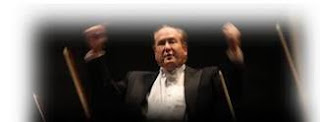The Columbus Symphony presents a Beethoven Marathon in the Ohio Theater,
November 11 and 12. Come early and stay late.
Today, more than ever, many of us need this music.
And there's never a bad time to hear Beethoven.
Here's the rundown for both evenings:
6 PM Beethoven Quintet for Winds, Op. 16
7 PM CP, that would be me, talks about Beethoven
8 PM Columbus Symphony conducted by Peter Stafford Wilson
Beethoven:
Symphony 2 in D, Op. 36
Concerto for violin, cello and piano in C, Op. 56
with Alicia Hui violin; Luis Biava, cello and Caroline Hong, piano
Symphony 7 in A, Op. 92
10 PM: String Quartet in c sharp minor, Op. 131 with Joanna Frankel, Robert Firdman, Karl Pedersen and Pei-An Chao
Joanna Frankel is the Columbus Symphony's new first chair violinist, or concertmaster.
Conductor Peter Stafford Wilson says, "No matter how often I visit these works, I always discover something new in them music of Beethoven.. I think its as relevant now as when it was written. And what a treat to explore the Triple Concerto with Caroline, Alicia and Luis!"
Beethoven's Second Symphony was completed in the summer of 1802. By this time, the composer was thirty two years old. He had been complaining of a roaring in his ears, and the idea of impending deafness weighed heavily. Beethoven made his living as a pianist/conductor/composer, as had Mozart and Haydn. A deaf composer can still write down what he hears in his head. What he cannot do is perform with other musician. Thus an important avenue of public acclaim and money was becoming unavailable. Difficulties with the publisher Breitkopf and Hartel continued. Composers made their money from sales of their music. Chamber music sold because it was perfect for home use. Symphonies brought applause, but little money.
The Heiligenstadt Testament is a letter Beethoven addressed to his brothers. He had come to this village outside Vienna on doctor's orders, thinking that quieter surroundings would treat his troubled hearing. Such was not the case,
"Though born with a fiery, active temperament, even susceptible to the diversions of society, I was soon compelled to withdraw into myself, to life live alone. If at times I tried to forget all this, oh, how harshly was I flung back by the doubly sad experience of my bad hearing. Yet it was impossible for me to say to people, "Speak louder, shout, for I am deaf."
In the midst of despair came the rollicking Second Symphony. Beethoven was still able to step outside of himself to craft music that may have been devoid of Mozart's elegance, but which possessed a stronger kind of grace and proportion. It is wrong to call Beethoven a romantic. He was still bound to the traditional forms Haydn loved. Still, the muscular textures of Beethoven's music looked forward.
The second movement, the larghetto (not as slow as slow!) of the second symphony was encored at the first performance. This was a monster concert, given in Vienna on April 5, 1803. Beethoven conducted his First symphony and his oratorio Christ on the Mount of Olives, along with the Third piano concerto.
The final allegro molto begins with a loud, syncopated figure. It's been called a hiccup, and worse:
"Beethoven's gastric problems, particularly in times of great distress, like the fall of 1802, were legendary. It has been understood almost since the day of its premiere that this is what this music is about . Beethoven never refuted it. In fact, he must have encouraged it. Otherwise, how could such an interpretation become common coin? And common coin it is."--Robert Greenberg author, musicologist, San Francisco Conservatory of Music
One critic wrote, "this symphony is a wounded, writhing dragon that refuses to die, but writhing in the last agony, in the final movement, is bleeding to death." This critic needed to get over himself. The D Major symphony is filled with dance, light and humor. OK, there's along, dark and wonderful intro to keep us off kilter, but tinta here is one of delight.
The piano trio is a much loved genre in chamber music, not least by Beethoven. The Triple Concerto, Op. 56, for violin, cello and piano was completed in 1803 and introduced the following year. I find this a more intimate work than the symphony. The dialogue, a sort of "catch the ball" between the cello, violin and piano humanize the music for this listener. The finale is alla polaca-a Polish dance movement in 3/4 used in a later generation by Chopin.
The Seventh Symphony was completed in 1813 has been called the symphony of rhythm more than tunes.There are tunes a-plenty, but they are almost beside the point. This A Major symphony is all about forward momentum. From a lesser composer, this 'race to the finish' would be a bore. Beethoven infuses it with drama, not least from moving through keys distant to A Major. Michael Steinberg writes, of " great harmonic spaces....The excursions to C and Fare entered upon with startling bluntness" "The forward momentum becomes evident the first big tune. The contrasting allegretto-lively, not really faster than fast-does a lot with one note and repetition. It's like watching a flower slowly bloom and prosper. It was cheered to
the walls by the first audience in Vienna. An encore was demanded.
Composer Ludwig Spohr was a young violinist who reproved from the first night of Beethoven's conducting, "At a sforzando he tore his arms with great vehemence asunder. At the entrance of the forte, he jumped in the air!"
As for the wild finale, its good to recall the words of conductor Thomas Beecham "What can you do with this? It's like a lot of yaks running about!"
What can you do? Peter Stafford Wilson and the Columbus symphony will know. join them this weekend and find out.


No comments:
Post a Comment